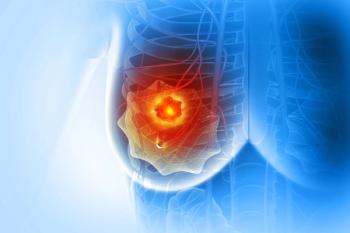
- January 2018 Oncology
- Volume 84
- Issue 1
Immunotherapy in Cancer: Rebooting Natural Defenses
Through the ages, cancer’s reputation has been notorious.
Through the ages, cancer’s reputation has been notorious. Although most diseases wax and wane, until the middle of the past century, most people perceived cancer as a painful, relentless march toward death. Occasionally, however, clinicians observed cases of spontaneous remission. They questioned whether remarkable recovery was actually a misdiagnosis or some inexplicable self-repair mechanism.1 Beginning in the 1970s, some investigators looked at spontaneous regression in melanoma and asked, “Could the patient’s immune system have kicked in, effectively combating the tumor?” The science of immunotherapy had emerged.2
Over the following 40 years, the idea of using the patient’s own immune system to combat cancer took hold, albeit slowly. The FDA approved the first cancer immunotherapy agent, interferon alpha, in 1986. In 1992, the FDA approved interleukin-2 for cancer. Things were then quiet for almost 20 years. But since 2010, the FDA has approved a handful of effective immunotherapies.2
Just a small number of immunotherapies are available. Let’s look at the monoclonal antibodies with the most prescribing activity lately (Table 13-6).
The agents discussed in Table 13-6 are called immune checkpoint blockers, and they are divided into cytotoxic T-lymphocyte antigen-4 (CTLA-4) receptor and programmed death-1 (PD-1)/programmed death ligand-1 agents. In addition, a newer term is microsatellite instability. It reflects a change in tumor DNA, in which the number of repeats of microsatellites (short, repeated DNA sequences) differs from the number of repeats in the patient’s inherited DNA. A defect in the ability to repair mistakes during DNA copying may be the cause.3-6
All the most recent immunotherapies require patients to carry specific biomarkers on their tumors. Some patients have had dramatic responses, indicating that the biologic restored antitumor immune surveillance. However, overall, these agents work only in select cancers and usually in a subset of patients with those cancers.7,8
Investigators think that because cancer immunotherapies are usually used after first-line treatments (eg, conventional chemotherapy), patients’ immune systems are already weakened by advanced disease and/or previous therapies. Restoring the antitumor immune function is harder than in conditions of more robust immune function. Administering personalized cancer immunotherapies earlier—a strategy that is emerging—may lead to better response rates.9
Chemotherapy usually creates a rapid tumor response. With immunotherapy, some patients will respond early, but immunotherapies cause immune cells to infiltrate tumors and then destroy them. On an x-ray or a computed tomography scan, tumors often appear enlarged before they begin to shrink, suggesting malignancy growth, called pseudo-progression. Routine scans do not differentiate between malignant tumor tissue and normal infiltrating immune system cells and fluid.10,11 Tumor shrinkage may take more time than expected with traditional treatments.12
Many patients will eventually respond, and response can last years, even after immunotherapy ends.13 In several of the approved indications, patients have experienced more than 6 months of progression-free survival,14 a significant improvement over traditional treatments.
Cancer immunotherapies are very costly,15 and often the co-payment can be staggering for patients. Patients need to work with a specialty pharmacy or a cancer treatment clinic to obtain these biologics.
Immunotherapies have few drug interactions (Table 23-6).
In general, these agents are not as toxic as traditional chemotherapies, and most adverse effects (AEs) are low-grade. Ipilimumab has been associated with rash, diarrhea/colitis, liver toxicity, and endocrine toxicity (pituitary dysfunction and diabetes), with about a quarter of patients experiencing dose-limiting toxicities.6 Atezolizumab, nivolumab, and pembrolizumab may cause diarrhea, endocrine and liver toxicity, and a rash. Just 15% of patients experience these in a magnitude that is dose-limiting, however.3-5
So what should pharmacists know about immune-related AEs? The most important thing is to educate patients to recognize AEs early. Nonspecific complaints may indicate endocrine (pituitary) toxicity. Diarrhea is a particular concern for patients, and it most often starts 6 to 8 weeks after treatment begins.16
Corticosteroids are effective, especially for diarrhea, and clinicians should be cautious not to taper too quickly. In patients whose diarrhea becomes severe, clinicians may consider high-dose steroids, infliximab, or mycophenolate mofetil.17,18
Combination immunotherapies are associated with higher toxicity rates than single-agent immunotherapy. Watch patients who are on combination (CTLA-4/PD-1) therapy closely for multiple or early AEs.17,18
Community pharmacists can support patients who are on immunotherapies, especially by educating them about AEs and providing encouragement.
Jeannette Y. Wick, RPh, MBA, FASCP, is the associate director of the Office of Pharmacy Professional Development at the University of Connecticut School of Pharmacy in Storrs.
References
- Zanni GR, Wick JY. Physiological and psychological factors may be involved in remarkable recovery. Consult Pharm. 2005;(20)8:634-636, vi.
- Walko CM, Kudchadkar R. Understanding the pharmacology of immunotherapy: a look at the future in managing difficult-to-treat cancers. ASHP Symposium. December 6, 2016. Accessed December 8, 2017.
- Tecentriq [prescribing information]. South San Francisco, CA: Genentech Inc; 2017. https://www. gene.com/download/pdf/tecentriq_prescribing.pdf. Accessed December 8, 2017.
- Keytruda [prescribing information]. Whitehouse Station, NJ: Merck Sharp & Dohme Corp; 2014. merck.com/product/usa/pi_circulars/k/keytruda/keytruda_pi.pdf. Accessed December 8, 2017.
- Opdivo [prescribing information]. Princeton, NJ: Bristol-Myers Squibb Co; 2017. packageinserts.bms.com/pi/pi_opdivo.pdf. Accessed December 8, 2017.
- Yervoy [prescribing information]. Princeton, NJ: Bristol-Myers Squibb Co; 2015. https://www. accessdata.fda.gov/drugsatfda_docs/label/2015/125377s073lbl.pdf. Accessed December 8, 2017.
- Chiriva-Internati M, Bot A. A new era in cancer immunotherapy: discovering novel targets and reprogramming the immune system. Int Rev Immunol. 2015;34(2):101-103. doi: 10.3109/08830185.2015.1015888.
- Yang Y. Cancer immunotherapy: harnessing the immune system to battle cancer. J Clin Invest. 2015;125(9):3335-3337. doi: 10.1172/JCI83871.
- West H. Nivolumab as first-line monotherapy for advanced non-small cell lung cancer; could we replace first-line chemotherapy with immunotherapy? Transl Lung Cancer Res. 2014;3(6):400-402. doi: 10.3978/j.issn.2218-6751.2014.09.04.
- Russell SJ. Harnessing viruses to treat cancer. Mayo Clinic website. www.mayo.edu/research/departments-divisions/department-molecular-medicine/harnessing-viruses-treat-cancer. Accessed September 15, 2016.
- Wong H, Lemoine NR, Wang Y. Oncolytic viruses for cancer therapy: overcoming the obstacles. Viruses. 2010:2(1):78-106. doi: 10.3390/v2010078.
- Hodi FS, Hwu WJ, Kefford R, et al. Evaluation of immune-related response criteria and RECIST v1.1 in patients with advanced melanoma treated with pembrolizumab. J Clin Oncol. 2016;34(13):1510-1517. doi: 10.1200/JCO.2015.64.0391.
- Cancer statistics. National Cancer Institute website. cancer.gov/about-cancer/understanding/statistics. Updated March 22, 2017. Accessed November 15, 2017.
- Tartari F, Santoni M, Burattini L, Mazzanti P, Onofri A, Berardi R. Economic sustainability of anti-PD-1 agents nivolumab and pembrolizumab in cancer patients: recent insights and future challenges. Cancer Treat Rev. 2016;48:20-24. doi: 10.1016/j.ctrv.2016.06.002.
- Grady D. Harnessing the immune system to fight cancer. New York Times. nytimes.com/2016/07/31/health/harnessing-the-immune-system-to-fight-cancer.html. Published July 30, 2016. Accessed November 15, 2017.
- Villa NM, Farahmand A, Du L, et al. Endocrinopathies with use of cancer immunotherapies [published online September 23, 2017]. Clin Endocrinol (Oxf). doi: 10.1111/cen.13483.
- Pollack MH, Betof A, Dearden H, et al. Safety of resuming anti-PD-1 in patients with immune-related adverse events (irAEs) during combined anti-CTLA-4 and anti-PD1 in metastatic melanoma [published online October 11, 2017]. Ann Oncol. doi:10.1093/annonc/mdx642.
- Fukumoto T, Fujiwara S, Tajima S, et al. Infliximab for severe colitis associated with nivolumab followed by ipilimumab [published online September 11, 2017]. J Dermatol. doi: 10.1111/1346-8138.14034.
Articles in this issue
over 7 years ago
Self-Care for Oncologyover 7 years ago
Oral Contraceptives and St John's Wortalmost 8 years ago
Pet Peeves (January 2018)almost 8 years ago
Generic Product News (January 2018)almost 8 years ago
Rx Product News (January 2018)almost 8 years ago
OTC Product News (January 2018)almost 8 years ago
Case Studies (January 2018)almost 8 years ago
Can You Read These Rxs? (January 2018)almost 8 years ago
The Cancer-Diabetes Connectionalmost 8 years ago
Data Management and OncologyNewsletter
Stay informed on drug updates, treatment guidelines, and pharmacy practice trends—subscribe to Pharmacy Times for weekly clinical insights.

















































































































































































































